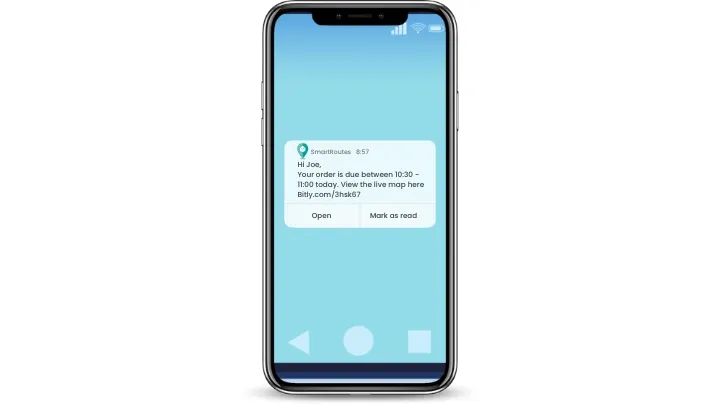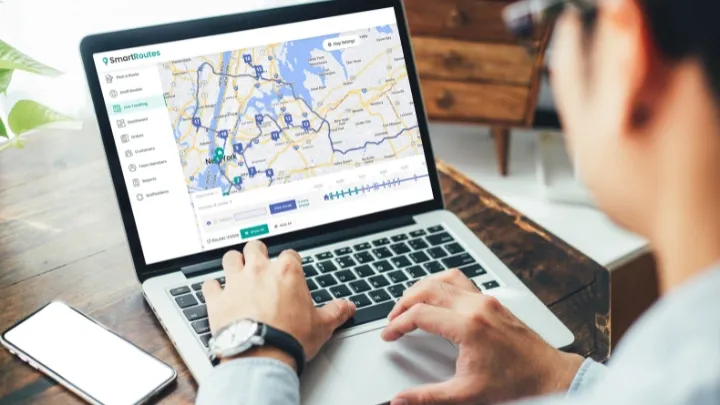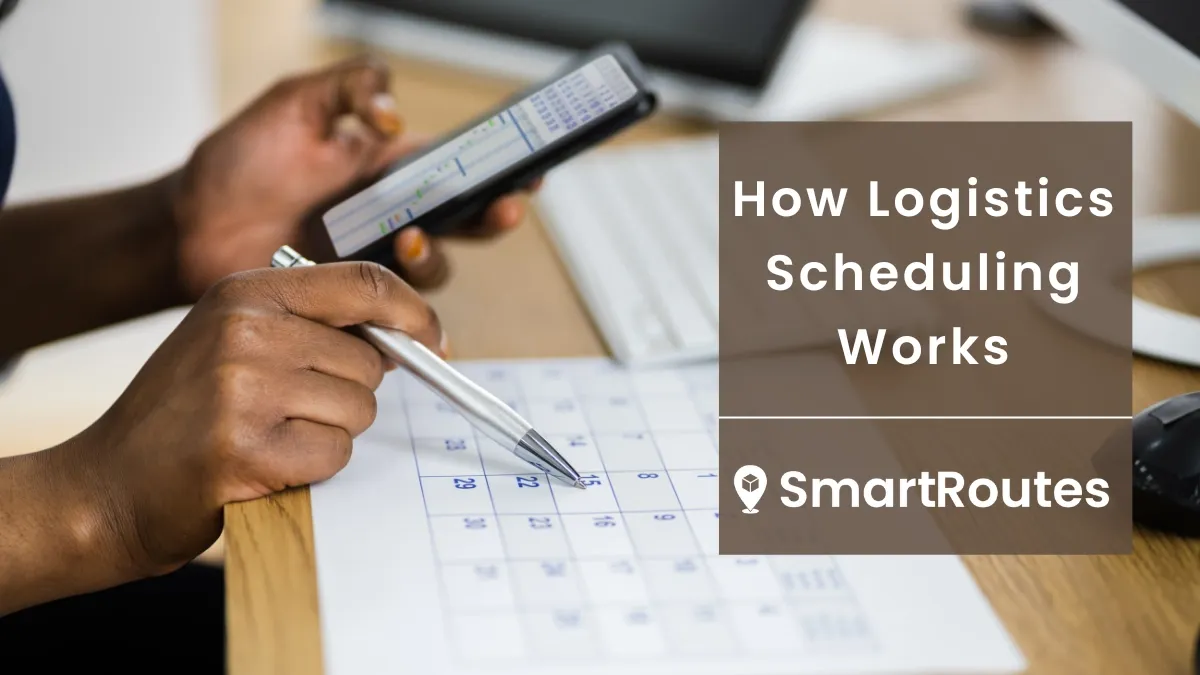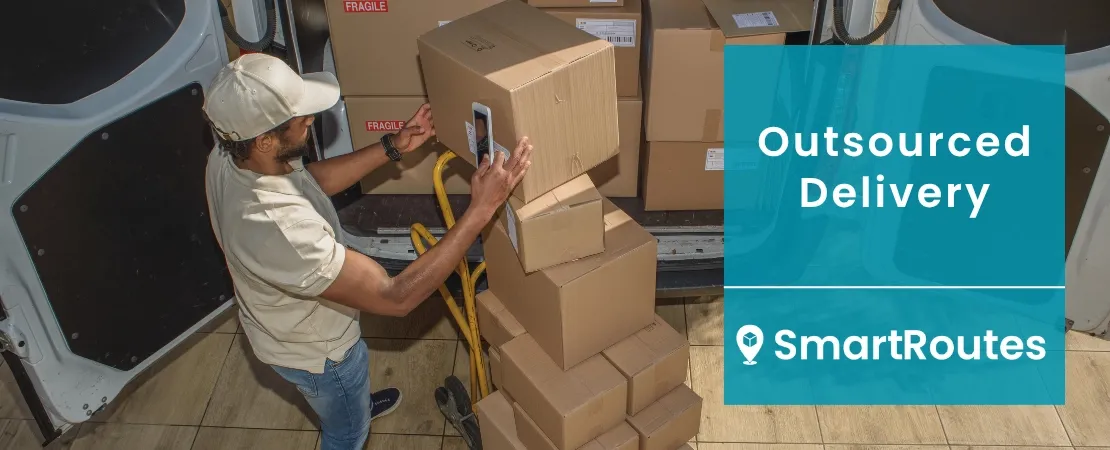When it comes to direct-to-consumer delivery, businesses face several options for getting their products to customers. One increasingly popular method is outsourcing delivery to third-party providers. Many businesses consider this approach to be the most cost-effective solution, especially when delivering over a large area. However, outsourcing delivery comes with its own set of challenges, including reduced oversight of last-mile operations. To address these challenges, businesses can leverage delivery management software to gain better visibility and control over outsourced delivery processes.
In this blog, we'll explore outsourced delivery, the benefits it offers, and how you can ensure successful outcomes when leveraging this model for your business.
What is Outsourced Delivery?
Outsourced delivery involves the use of third-party logistics (3PL) companies or courier services to deliver products to customers. This approach can be highly advantageous for businesses that prefer not to manage the delivery process internally. By partnering with experienced delivery providers, companies can benefit from the expertise and extensive networks of these third-party operators. Major players in the industry, such as FedEx and DPD, provide comprehensive delivery solutions. Additionally, specialized providers offer services like large goods delivery, two-man delivery for bulky items, or even collection of old goods for recycling or disposal.
SmartRoutes Route Planning Software
Streamline your entire delivery process, all from one platform

What are The Benefits of Outsourcing Delivery?
- Expanding Delivery Reach: By partnering with third-party delivery providers, companies can leverage their extensive networks, which typically cover wide and diverse regions. This allows businesses to reach customers in areas that were previously inaccessible or economically unfeasible to service. This not only broadens the customer base but also opens up new market opportunities that can drive growth.
- Economies of Scale: Outsourced delivery providers can leverage economies of scale to offer faster and more cost-effective deliveries, primarily due to their extensive fleets and well-established delivery routes. By serving multiple clients simultaneously, these providers can consolidate deliveries, maximizing the efficiency of each delivery run. This means that businesses don't have to wait to accumulate enough orders in a particular area to justify sending out a delivery, as the third-party provider likely already has regular routes covering these regions. This consolidated approach results in quicker delivery times, as the delivery provider can utilize their optimized routes and schedule to ensure timely deliveries, even for smaller volumes of orders. It also leads to lower costs per delivery for businesses, as the provider spreads the operational costs across a higher volume of deliveries.
- Avoiding Fleet Management: By outsourcing delivery, businesses can avoid the substantial financial burden of owning and maintaining a fleet of vehicles, which encompasses a range of significant costs. These costs include the initial capital expenditure for purchasing the vehicles, the continuous expenses such as routine maintenance to keep the vehicles in good working order, fuel costs that can fluctuate and affect overall budgeting, and insurance premiums that must be paid to protect against accidents, theft, and other liabilities. Beyond these financial aspects, fleet management also demands significant time and resources to handle logistics, compliance with regulations, driver recruitment, training, and vehicle tracking. By outsourcing to a specialized delivery provider, businesses can eliminate these complex responsibilities and focus their efforts on the core business.
- Access to Warehousing Solutions: Many third-party logistics (3PL) providers extend their services to include warehousing solutions, which can be highly advantageous for businesses lacking the infrastructure or capacity to store significant quantities of inventory. By leveraging these warehousing services, businesses can avoid the substantial expense and logistical complexities associated with leasing, setting up, and managing their own storage facilities.
- Reduced Responsibility and Liability: Once goods are entrusted to a third-party delivery provider, the responsibility for ensuring they reach customers undamaged transfers to the delivery company. This shift in liability helps businesses mitigate risks and significantly reduces the number of issues that can arise during the delivery process. By partnering with professional delivery providers who have extensive experience and expertise, businesses can benefit from their ability to handle a wide range of scenarios, from navigating complex delivery routes to dealing with unforeseen challenges.
How to Achieve Success with Outsourced Delivery
Selecting the right delivery provider is critical for ensuring that your outsourced delivery operations run smoothly and meet the expectations of your customers. Below are some key considerations that can help you choose the best partner and achieve success with your delivery strategy:
Balancing Cost and Quality
While it may be tempting to opt for the cheapest delivery option, it's essential to consider the overall value provided by a delivery service. The lowest-cost provider might save money upfront but could potentially compromise on quality, leading to delays, damaged goods, or poor customer experiences. Striking the right balance between affordability and service quality is crucial. For example, a service that offers threshold delivery, where goods are delivered to the customer's doorstep or a designated safe place, can significantly enhance the customer experience by ensuring the safe and convenient receipt of packages.
Assessing cost in the context of the total value delivered—including reliability, speed, and customer satisfaction—is key to choosing the right provider.
Evaluating Dependability
Dependability is a cornerstone of effective delivery service. When considering potential delivery providers, it's important to research their track record thoroughly. Look for reviews and testimonials from other businesses, and pay attention to feedback regarding the provider's ability to deliver on time and handle goods with care.
Consistency in delivery times and minimal damage rates are indicators of a reliable provider. A dependable delivery service helps maintain customer satisfaction and trust, which are essential for building long-term loyalty and a positive brand reputation.
Establishing Clear Communication
Effective communication is vital for the success of outsourced delivery operations. Clear lines of communication between your business, the third-party logistics (3PL) provider, and your customers can prevent misunderstandings and ensure that everyone is on the same page.

This includes establishing protocols for regular updates on delivery status, procedures for handling issues or delays, and clear contact points for inquiries. Transparent communication helps to build trust and ensures that any potential problems are addressed promptly and efficiently, leading to smoother operations and enhanced customer satisfaction.
Considering Return Services
Returns are an integral part of the delivery process for many businesses, especially those dealing with e-commerce or consumer goods. If handling returns is important to your business, ensure that your chosen delivery provider offers comprehensive reverse logistics services. This can include picking up returned items from customers' homes, providing packaging for returns, and managing the reverse logistics process efficiently.
Having a robust returns process can improve customer satisfaction by making it easier for them to return products and receive refunds or replacements quickly, thus fostering customer loyalty and encouraging repeat business.
Leveraging Technology for Efficiency
In today's digital age, leveraging advanced technology is essential for optimizing delivery operations. Choose a delivery provider that utilizes cutting-edge technology to streamline and enhance their services. For instance, route planning software can significantly improve delivery efficiency by automating route planning and minimizing the chances of errors, ensuring that deliveries are timely and cost-effective.

Additionally, features such as proof of delivery, customer notifications, live estimated times of arrival (ETAs), and tracking links provide transparency and keep customers informed throughout the delivery process. These technological advancements not only increase operational efficiency but also enhance the overall customer experience by providing reliable and accurate delivery information.
Elevate Your Business with Efficient Outsourced Delivery
Outsourced delivery offers numerous benefits, from expanding delivery reach and reducing costs to improving efficiency and shifting liability. By carefully selecting a reliable delivery provider and leveraging technology, businesses can enhance their delivery operations and provide a better experience for their customers.
If you currently offer home delivery as a 3PL or as part of your business, we invite you to try SmartRoutes for free to see how we can help improve your delivery operations.
FAQ
1. What is outsourced delivery and how does it work?
Outsourced delivery involves partnering with third-party logistics (3PL) providers or courier services to handle the delivery of products to customers. These providers manage the entire delivery process, from picking up goods from your warehouse to delivering them to your customers. This allows businesses to leverage the expertise and infrastructure of established delivery companies, reducing the need for in-house delivery operations.
2. What challenges are associated with outsourcing deliveries?
While outsourcing deliveries offers numerous benefits, there are several challenges that businesses may encounter:
- Loss of Control: Outsourcing delivery means relinquishing some level of control over the delivery process. Businesses may experience challenges in ensuring consistent service levels and maintaining brand standards across different regions serviced by the third-party provider.
- Dependence on Third-Party Providers: Businesses rely heavily on the reliability and performance of the chosen 3PL provider. Issues such as delayed deliveries, damaged goods, or poor customer service from the provider can directly impact customer satisfaction and brand reputation.
- Cost Considerations: While outsourcing can reduce upfront costs associated with owning and managing a delivery fleet, businesses must carefully evaluate the total cost of outsourcing versus the benefits gained. Hidden fees, fluctuating service costs, and unforeseen expenses can affect the overall cost-effectiveness of outsourcing.
3. What role does technology play in outsourced delivery services?
Technology plays a pivotal role in optimizing and enhancing outsourced delivery services:
- Route Optimization: Advanced route planning software enables 3PL providers to optimize delivery routes based on factors such as distance, traffic conditions, and delivery windows. This reduces delivery times, fuel consumption, and operational costs while improving overall efficiency.
- Real-Time Tracking: Technologies such as GPS tracking and real-time shipment monitoring allow businesses and customers to track the status and location of deliveries in real-time. This transparency improves visibility into the delivery process, enhances communication, and provides accurate estimated time of arrivals (ETAs) to customers.
- Proof of Delivery: Digital proof of delivery (POD) systems eliminate paperwork and provide electronic confirmation when a delivery is completed. This includes capturing electronic signatures, timestamps, and photos of delivered goods, ensuring accountability and reducing disputes over delivery status.
- Customer Notifications: Automated notifications via SMS or email keep customers informed about the status of their deliveries, including shipment confirmations, delivery ETAs, and delivery completion notifications.
If you enjoyed this blog, you might also be interested in:




